-
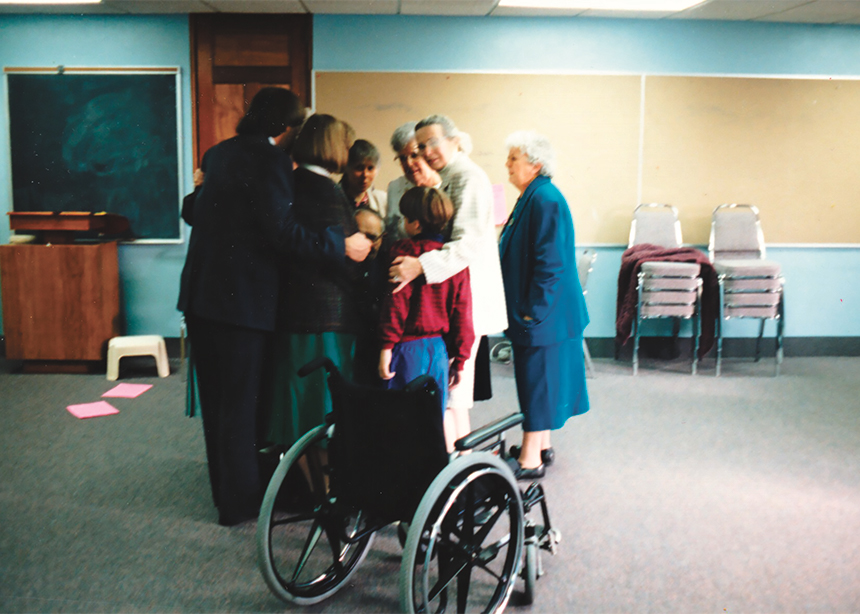
Festival of Peace
Participants in a Festival of Peace at Stirling Avenue Mennonite Church in Kitchener, Ont., embrace during a small group session. On Peace Sunday 1993, the congregation abandoned its typical Sunday morning routine to follow the Mennonite Central Committee Ontario Peace Sunday Packet workshop, “A commitment to Christ’s way of peace.” When a photograph such as…
-
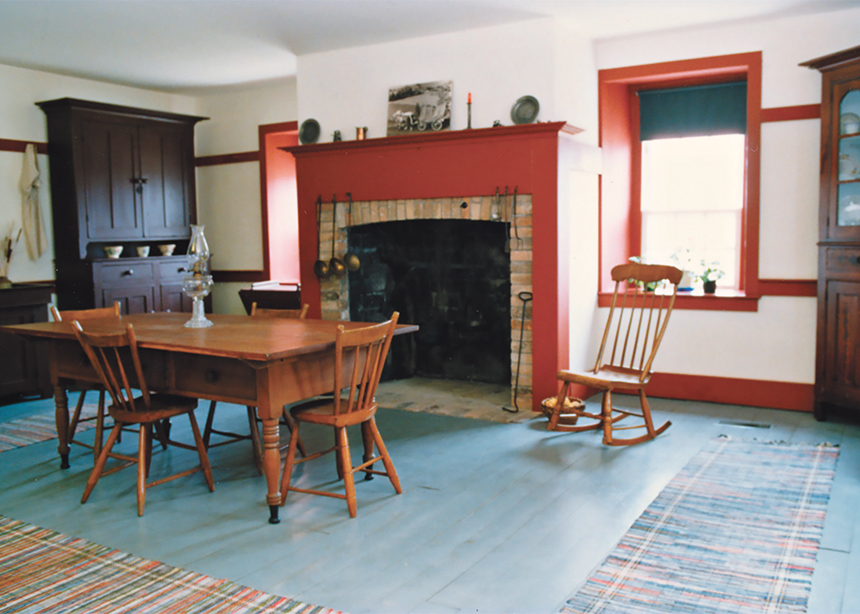
Brubacher House
Within this Mennonite hearth, we can read an environmental history. By 1850, when John E. and Magdalena Brubacher built this house, the forest stands of southwestern Ontario were well on their way to being transformed into farmland. The harvesting and sale of wood and its products was the engine of the economy. Settlers, used to…
-
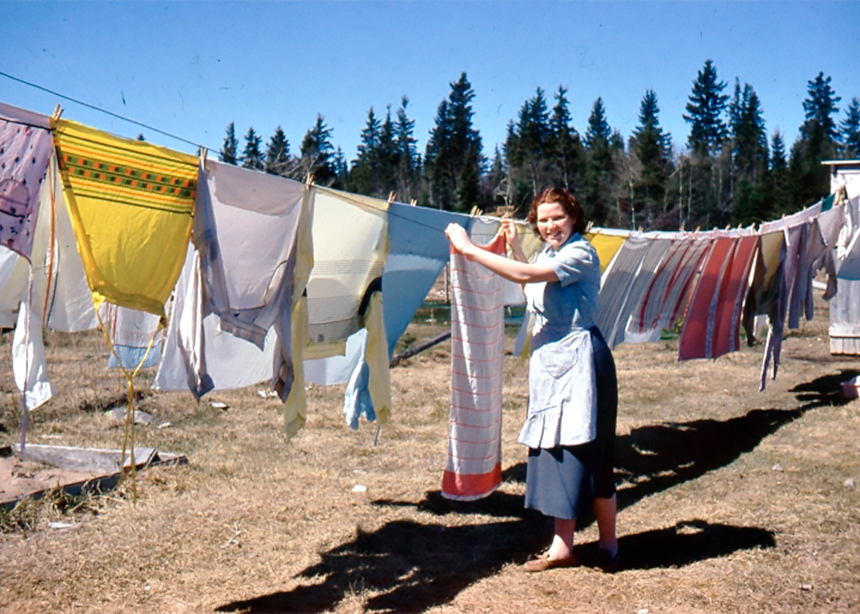
LaVerna Klippenstein
LaVerna Klippenstein (1934-2014) fulfilled many roles, including mother, wife, teacher and author. After her marriage to Lawrence Klippenstein in 1956, the pair began working in the Métis community of Matheson Island, Man., for two years with Mennonite Pioneer Mission. She is pictured hanging laundry on Matheson Island. She completed a bachelor’s degree from Goshen (Ind.)…
-
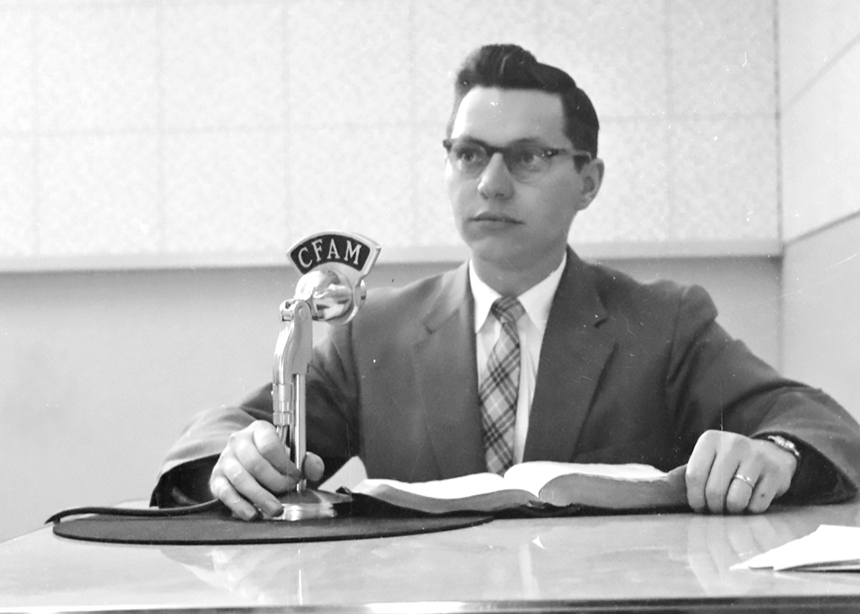
The twilight of Mennonite radio
Manitoba’s airwaves are full of Mennonite radio. I began to notice this last year when I started hosting a radio program for Canadian Mennonite University (CMU), where I also work. Except for Manitoba, none of the regional churches within Mennonite Church Canada currently produce radio programming, according to their executive ministers. In fact, as best…
-
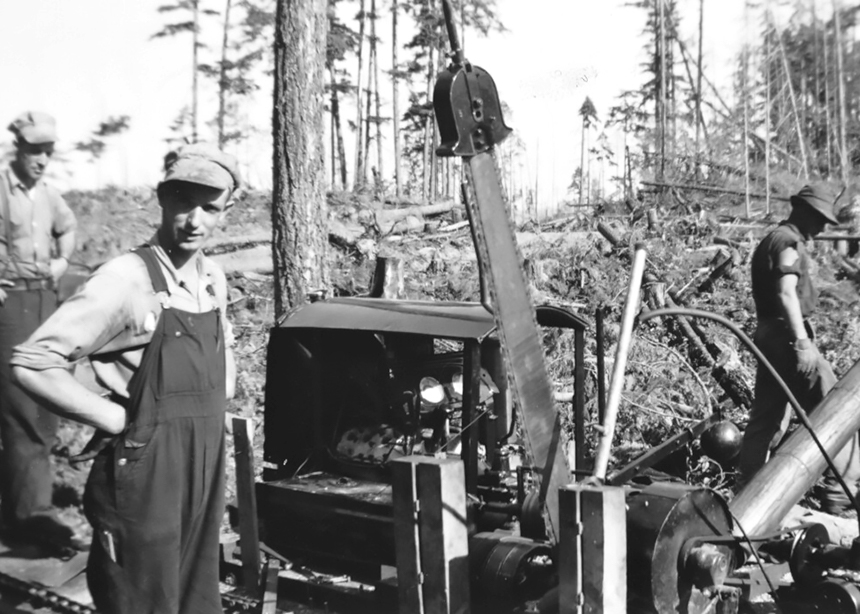
Len Bechtel
Len Bechtel, front, is pictured with a portable saw he and other conscientious objectors (COs) designed near Vancouver during the Second World War. As oil supplies dwindled due to the war, this group of workers with mechanical aptitude in the Alternative Service program were pulled aside from forestry work to help supply Vancouverites with wood…
-
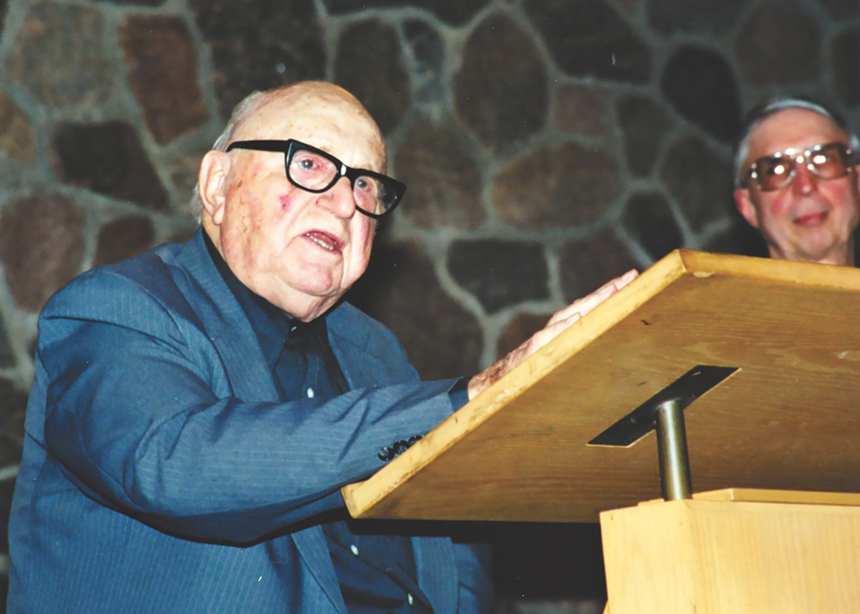
George Brunk
In 2001, evangelist George Brunk II, left, reflected on his 65-year-long ministry. Brunk’s style of revival meetings disrupted Mennonite communities. In a public talk at Conrad Grebel College he recalled, “At a time when Mennonite preachers stood still behind the pulpit, I would wander across the stage, carrying the microphone . . . from one…
-
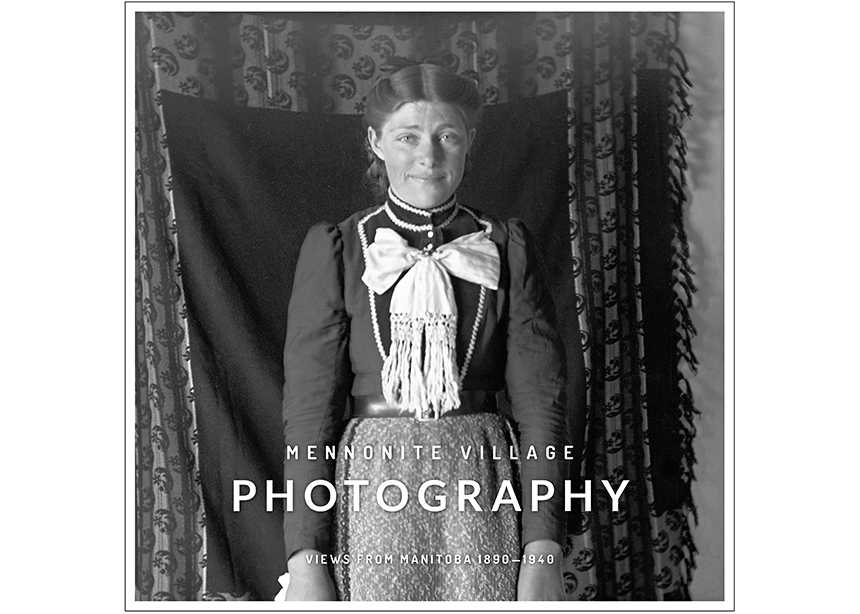
Century-old photos shed new light on Mennonites
Hundred-year-old images on fragile glass negatives, discovered in a dusty barn in the heritage village of Neubergthal, Man., open a window to Mennonite life in Manitoba in the early 20th century. These photographs, along with other archive collections, make up the new book, Mennonite Village Photography: Views from Manitoba 1890-1940. The volume is a collaborative effort of…
-
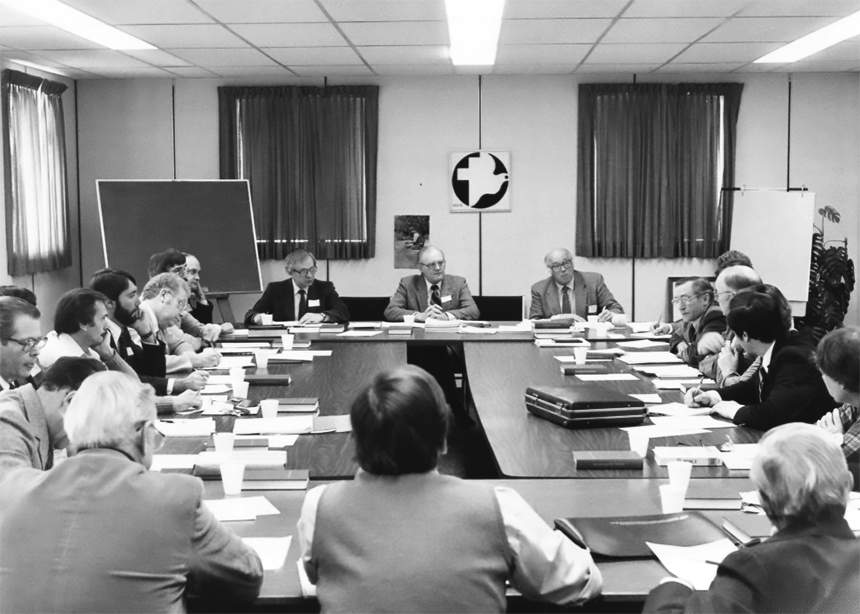
Canadian Foodgrains Bank meeting
The Canadian Foodgrains Bank had its beginnings in 1975 as the Mennonite Central Committee Food Bank. In November 1982, representatives of 10 Christian denominations met to discuss plans for an inter-church foodgrains bank. Among those at the meeting, pictured left to right facing the camera, were Frank H. Epp, J.M. Klassen and C. Wilbert Loewen.…
-
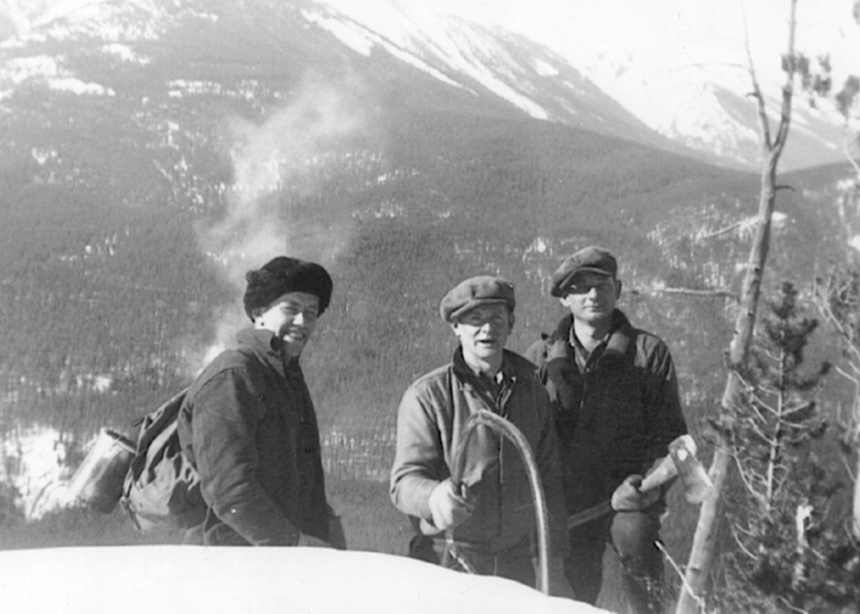
CO foresters
Conscientious objectors (COs) played an important role on the Canadian volunteer scene during the Second World War. Among the assignments was work in the forests around Banff, Alta., clearing trees. Surprisingly, much of the parks system in Canada was established by these people, some of whom were less than willing to be there or do…
-
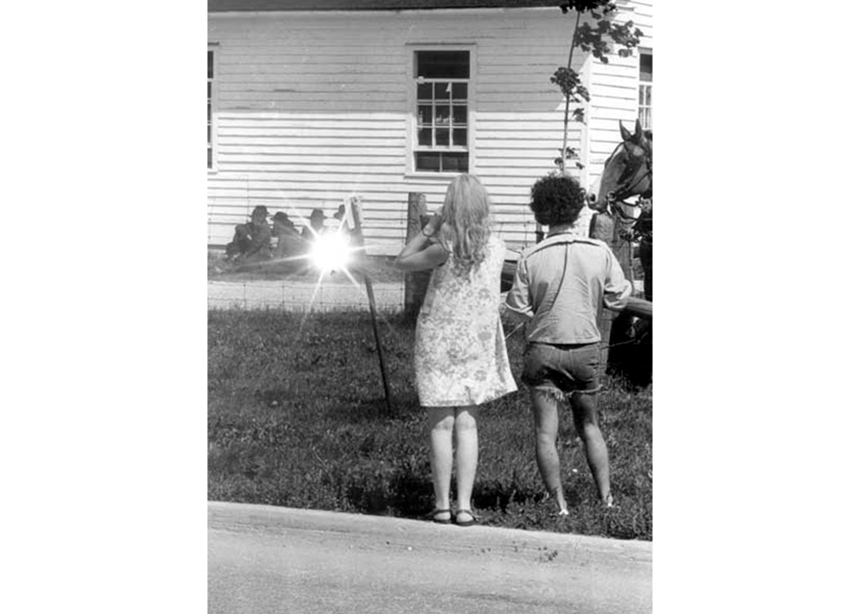
Mennonite resistance
Tourists attempt to photograph boys outside of the Elmira Old Order Mennonite Meetinghouse, circa 1970. The boys are using a hand mirror to thwart their efforts. The photo appeared in the local newspaper with the caption “Mennonite Resistance.” After the Second World War, urban Canadians embraced rural tourism. What do you think they were looking…
